10 Most Important Documents for Freight Transportation in 2025 Guide

Wandering what documents to prioritize during shipping?
Failing to file paperwork correctly can really throw a spanner in the works.
Without the right freight shipping documents, your shipment can be seized at customs, leading to shipping delays, and freight detention charges.
An Xcontainer study revealed that detention costs can reach $537 per day. So shipment delays resulting from customs complications can quickly spiral into huge losses.
It’s therefore essential to learn what freight transportation documents are important during shipping so that you can prepare the documentation you need to get through customs without hiccups to minimize delays for your business.
Just as important as these documents is a smart filing system like FileCenter, which can help you centralize essential files so you can produce them quickly when needed.
In this article, we’ll discuss the most important documents for freight transportation to help streamline your shipping processes to avoid delays and unnecessary penalties.
Let’s get started.
1. Bill of Lading
So what is a bill of lading or BOL document?
It’s basically a contract between your freight carrier and yourself as the shipper and plays a very important role in proving the carrier received the shipment. Furthermore, it outlines everyone’s responsibilities and liabilities.
Without a bill of lading document, you’ll be more susceptible to shipping disputes that can lead to your cargo being put on hold, causing shipment delays.
A study by McKinsey revealed that 40% of all containerized trade transactions rely on bills of lading to help smoothen the shipping process. This proves just how central it is to modern shipping, whether you’re transporting freight domestically or internationally.
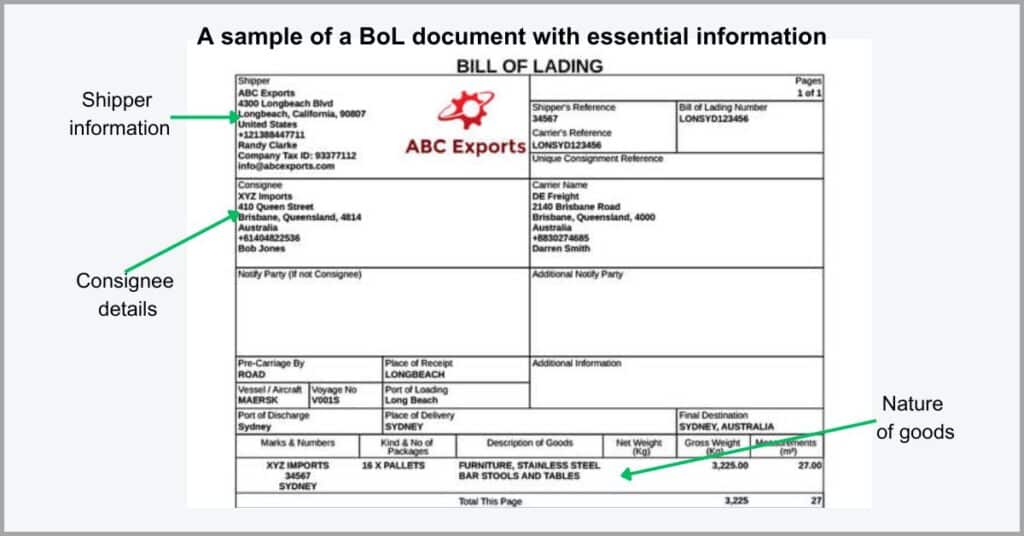
A great BoL document should have a few important details.
For instance, you should include shipment details, which specify the carrier, consignee, or receiver of the goods, and the shipper to help to clearly clarify all the parties involved.
It should also describe the nature of the goods being shipped. This entails clarifying details such as the freight’s dimensions, weight, quality, and even the nature of the goods being shipped.
Moreover, your BoL should contain electronic document signatures typically from all parties involved, which proves that they’ve read and agreed to the terms.
A BoL is overall one of the most important freight shipping documents because it provides legal protection when you’re transporting freight.
2. Customs declaration
Customs declaration forms are key to getting clearance.
You may need to declare and provide a detailed list of the goods you’re importing or exporting in order to advance through customs. That said, this document is particularly crucial when you’re shipping freight to customers across international borders.
If your customs declaration forms aren’t prepared accordingly, this can lengthen the customs clearance process and even lead to accidental customs fraud.
In fact, up to 43% of supply chain professionals admitted that shipment delays in customs was their top challenge when shipping internationally in 2023. A good number of these cases occurred as a result of errors and missing data in custom forms.
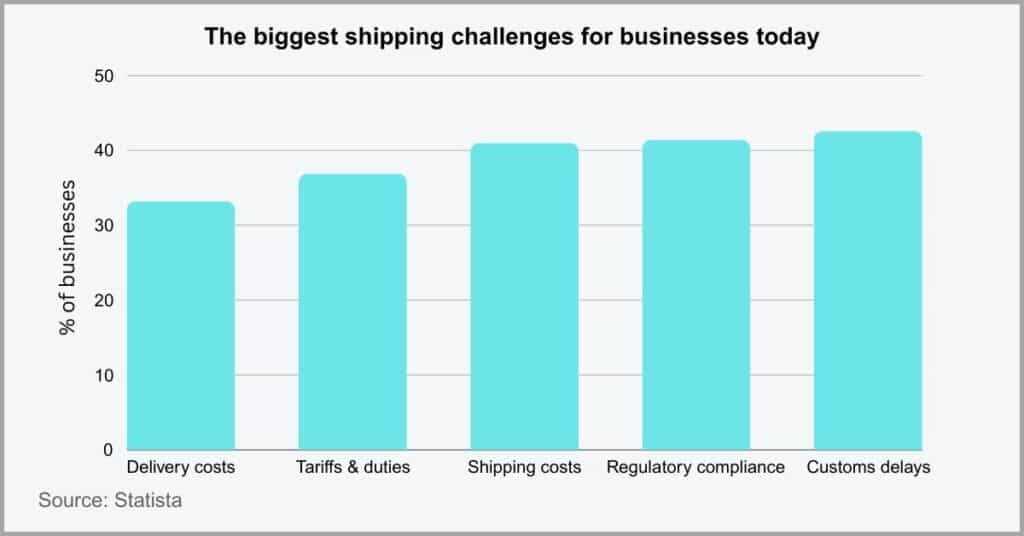
So what role does a customs declaration form play in clearance?
It serves several important purposes, one of which is to describe the value of goods to enable the appropriate levy of various duties and taxes.
A customs declaration form can help kickstart the customs procedure and is a vital enabler in achieving regulatory compliance with tax authorities. So if you’re shipping cross-borders, this document can help reduce delays.
To reduce the risk of committing customs fraud, you need to ensure that you’ve properly classified goods on your declaration forms. A great inventory management system can come in handy in this case, helping you to keep track of cargo and its content.
3. Proof of delivery
Why do you need a proof of delivery (PoD) document?
Well, this document proves that the consignee has received the goods and that the shipment was successfully completed. Otherwise, anyone can intercept the freight mid-transit and take out a few units of goods and you would be none the wiser.
So not having proof of delivery documentation leaves the door open for consignees to contest cargo reception and also enables insider package theft.
A study by TT Club revealed that up to 58% of cargo theft incidents were a result of some form of insider intervention. These cases would have been much fewer with excellent PoD documentation which can help improve cargo tracking & accountability.
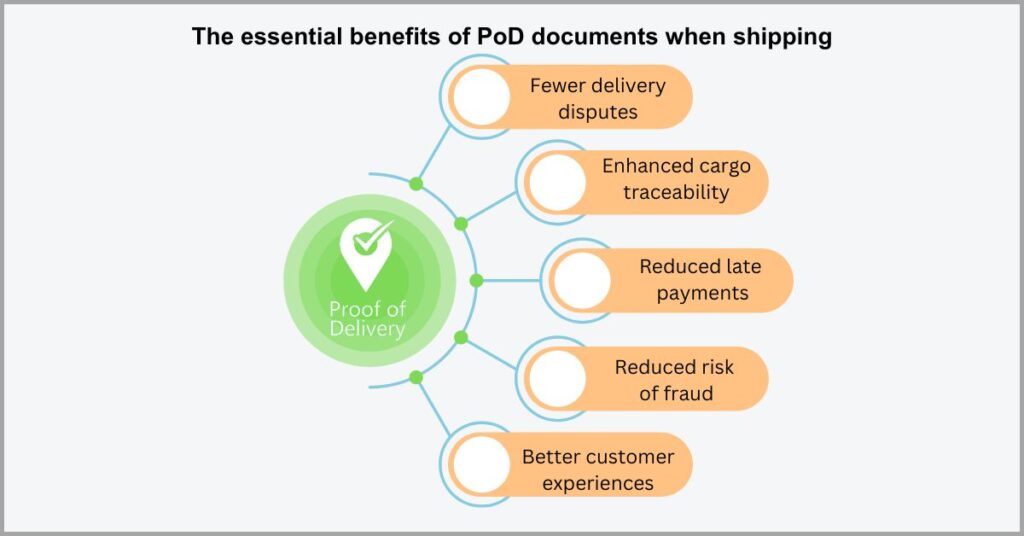
So a PoD is among the must-have freight transportation documents because it can help you reduce disputes and lower cases of insider theft by providing clear evidence that substantiates the consignees received their goods.
If you frequently ship cargo, creating PoD emails for each shipment can be exhausting.
This is why you need to use the best transloading software to automate the process and eliminate routine tasks to increase shipping efficiency.
Such a platform can help you capture important shipment details needed to create PoD documents, including digital photos that confirm the state of the cargo after shipping. This way, recipients are less likely to make unfounded claims about alleged damages.
4. Dangerous goods declaration
This form is necessary when you’re shipping dangerous goods.
A dangerous good is basically any substance that is corrosive, infectious, or flammable, and generally poses some sort of risk to humans, property, or the environment at large.
If you don’t declare dangerous cargo, this can lead to poor handling of the shipment, thereby raising the risk of spillage and exposure to hazardous material.
A study by the IATA found out that 52% of companies struggle with dangerous goods compliance. These challenges revolved around creating the necessary documentation as well as putting the right infrastructure in place to handle these types of freight.
So how can a dangerous goods declaration form improve safety?
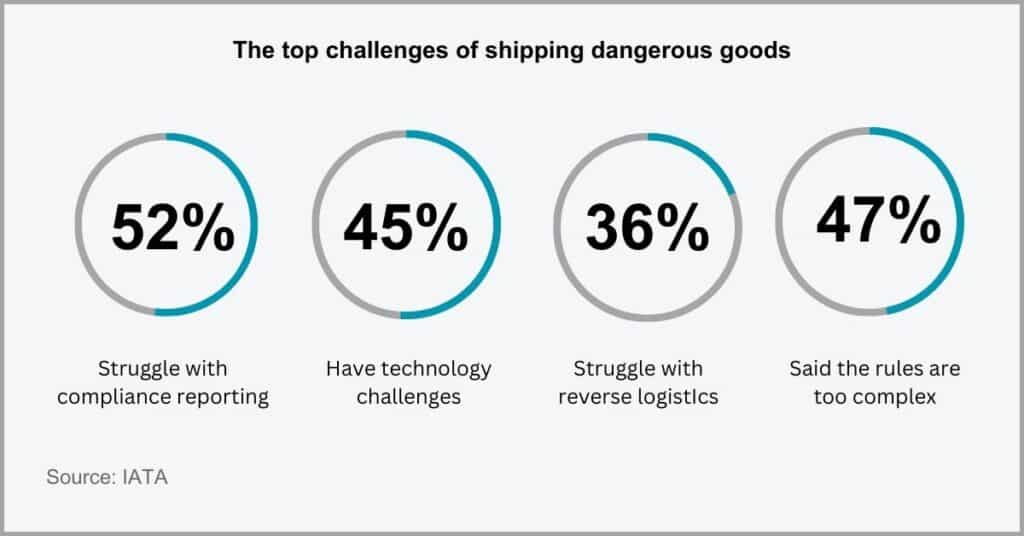
When you’re shipping cargo, creating this type of form can be instrumental in ensuring that anyone who comes into contact with your freight handles it accordingly.
So it can help improve human safety and prevent environmental pollution.
That said, I recommend that you enact a document digitization strategy for this and other types of essential freight shipping documents. That’s because this will make these records easier to share while helping to reduce the risk of document loss.
This form is very important when you’re shipping dangerous cargo by air, as it is a mandatory requirement set by the International Air Transport Association (IATA) in many countries. So in addition to enabling proper handling, it can also improve compliance.
5. Certificate of origin
Why is a certificate of origin necessary in shipping?
This document verifies the manufacturing location of the goods you’re shipping, and without it, you’ll face added complications when it comes to customs clearance.
Additionally, you may fail to capitalize on new markets as an exporter and miss out on trade agreement benefits that a valid certificate of origin can offer.
A World Trade Organization survey found that 89% of member countries have a mandatory requirement for including a certificate of origin during import declaration. So if you’ll be shipping within its jurisdictions, it’s best to have this document at the ready.
Otherwise, your freight can be detained indefinitely until you comply.
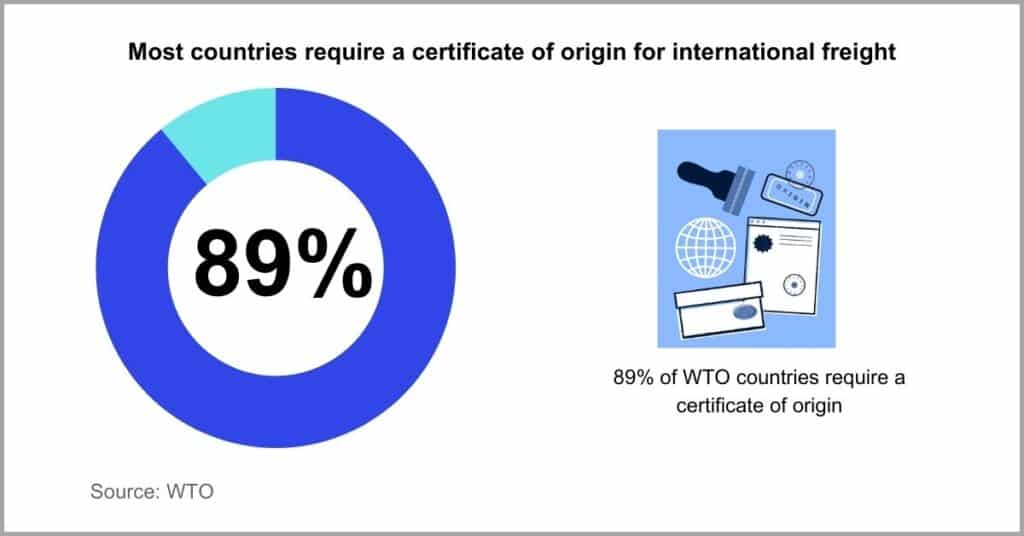
In terms of what makes a great certificate of origin, there are a few details that you must include.
Fortunately, with a top PDF editing solution, you can quickly create the right form fields and build a certificate of origin, among other freight shipping documents, quickly to improve productivity and reduce document errors.
This document should have details about the consignee and shipper, including their names, addresses, and contact details. It should also capture details about the port of discharge, port of loading, and final destination as well.
Other important information also includes the vessel name and voyage number, all of which will help create a clear trail of your shipment to improve compliance checks.
6. Packing list
A packing list itemizes everything inside your freight.
It provides very intricate details about the units of products you’re shipping and it may even offer additional information where your certificate of origin or bill of lading falls short, thereby creating an additional safety net.
While a packing list isn’t a legal necessity when shipping, not including one with your freight greatly increases the risk of shipping incorrect cargo.
A study by Descartes established that 67% of shippers experience various delivery issues during shipping, such as sending the wrong shipment to a client. With a packing list to help guide delivery better, some of these cases could have been easily avoided.

How do you draft a great packing list from scratch?
Well, having the best document management software to work with can certainly make the process significantly a lot easier. It enables you to create customizable templates to enhance efficiency and productivity.
That said, a great packing list should provide information that highlights the number of boxes, units and even packing details right on the freight’s exterior for excellent visibility.
It should also describe what type of packaging you used, and if you followed the necessary requirements for using that material. For instance, you’ll need to provide a fumigation certificate if you used solid wood for cargo packaging to prove compliance.
7. Freight claims form
Mishaps can occur during the transportation process.
Your cargo can get lost or damaged during shipping, or you may receive just a part of your shipment. All this may be the result of the actions or inactions of your carrier, transloading facility, and other supply chain partners.
So a freight claims form or an insurance certificate protects you from risk, and without it, you’ll struggle to get financial compensation for cargo loss.
In fact, 92% of businesses experienced theft, loss, or cargo damage during shipping in 2022, according to an InsuranceShiled study. This proves the dire need for cargo insurance and knowing how to file freight claims to ensure reimbursements.
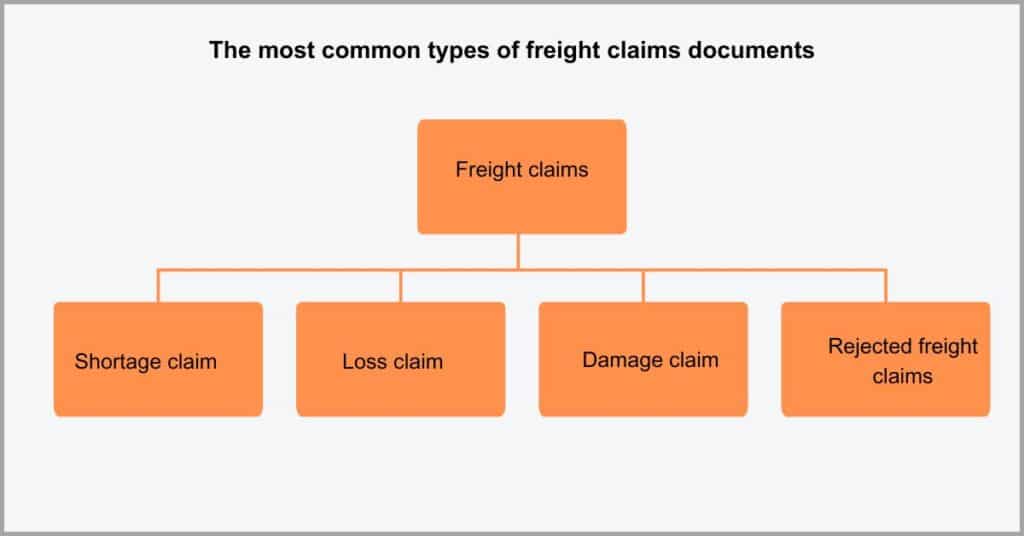
So how does a freight claims form protect you from loss?
Well, if you take out cargo insurance, this document can help protect you from different types of risk. This includes unscrupulous carriers concealing cargo damage, sending you part of your shipment, or completely losing your freight, among other issues.
It’s important to note that every carrier may provide a different type of freight claims form as federal law hasn’t standardized the process.
That being said, I recommend scanning paper files like freight transportation documents such as freight claims forms and insurance certificates, which are typically paper-based. This will help you accelerate claims filing and raise your claims approval rates.
8. Certificate of production
Are the goods you’re transporting up to quality standards?
This is a question that regulatory authorities would like to know, and this is where freight transportation documents like your certificate of production become important.
A certificate of production proves that the shipped products hold up to quality & regulatory standards, and not having it can lead to allegations of subpar goods.
Alarmingly, the US CBP seized over 23 million units of merchandise, which it termed as counterfeit or substandard according to their latest yearly shipping review. And that’s counting 2023 alone!
This represents a sharp increase from previous years and shows why the authorities are paying increasing attention to certificates of production.

A certificate of production, sometimes referred to as a certificate of manufacture, is therefore one of the most essential freight shipping documents to have if you want to avoid trouble with customs.
It’s best to use a cloud-based document management software to create digital copies of this form so you can produce it on-demand in case you lose the originals.
Aside from streamlining importation, this document is also key for tax relief purposes.
For instance, you may be eligible for certain exemptions from customs duty, and a certificate of manufacture is what you’ll use to prove this. So this form can also help lower your tax obligations to reduce your overall shipping costs.
9. Proforma invoice
This is a preliminary invoice you send to buyers before shipping.
As a shipper, the proforma invoice encourages your customers to make a financial commitment to paying the final sum after shipping, while making room for negotiation before you spend any of your resources.
So a proforma invoice substantiates the consignee’s agreement to pay for your shipping services or goods, and without it, payment disputes can arise.
A study by Kount revealed that less than 1.5% of transactions are disputed. While this means that payment disputes are very rare, they are by no means negligible. Even just a single payment dispute in ten years can cost you millions of dollars in losses.
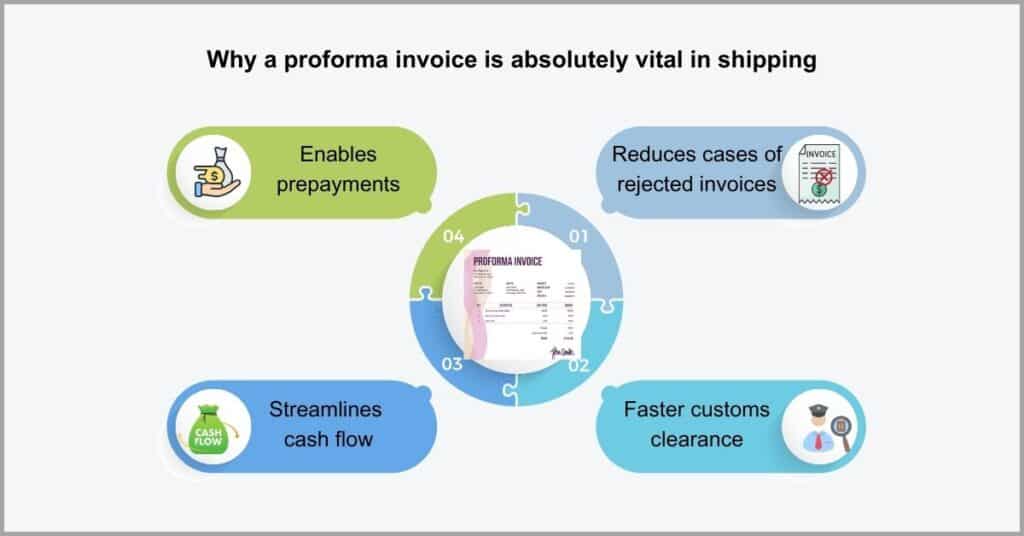
Need to create stunning invoices for your clients?
By leveraging the best document management software that integrates seamlessly with QuickBooks, you can draft professional and error-free invoices and other types of freight transportation documents faster to accelerate productivity.
Using our platform, FileCenter, for example, you can create a proforma invoice to officially seal the payment terms of the shipping agreement. This helps when you need to seek legal redress in case the consignee backs out of a payment.
But that’s not all a proforma invoice is good for.
It will also enable you to seek prepayment before you begin shipping to help mitigate risk while this document can also accelerate your custom clearance processes.
10. Inspection certificate
Does your freight have an inspection certificate?
Upon valuation of your cargo by a competent authority, you’ll receive an inspection certificate. This shows that the shipment was in good condition and generally meets the shipping agreements prior to shipping.
You can choose to ship without an inspection certificate in many states, however, this increases the risk of compliance headaches and getting defective goods.
A survey by Power Reviews revealed that 81% of consumers have returned goods because they were defective or damaged. So carrying out an inspection, and generating the inspection certificate to prove it, is an essential part of shipping for any business.
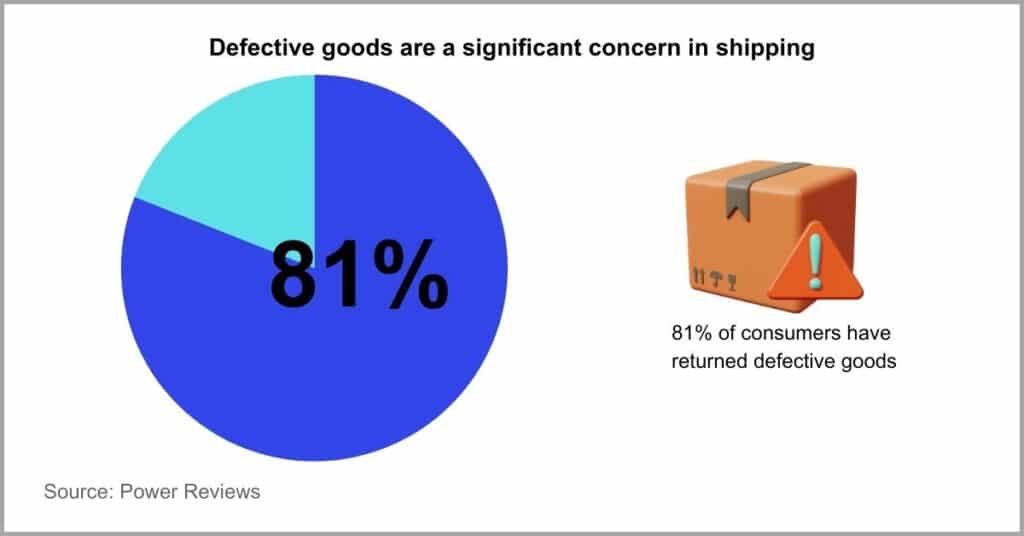
Generally, we have two types of inspection certificates.
The one I encounter often is an official inspection certificate, which customs officials provide after verifying that the shipment meets the terms of the sales agreement.
Another common type as far as document control and management in shipping is concerned is the commercial inspection certificate. This also verifies the manufacturer’s goods meet expected quality standards and the terms of your agreement.
Typically, an independent third party will perform the inspection to ensure that there can be no bias so that you get an accurate assessment. Based on this inspection, you’ll be able to make an informed decision on whether or not to proceed with the shipment.
Conclusion
Freight transportation has so many moving parts.
From carriers and customs to consignees and other parties, they’re multiple sources of paperwork to deal with.
If you lack a standardized system for managing and organizing freight shipping documents, you can misplace key files and incur shipping delays.
A report by Shippo revealed that 68% of shippers work with up to six different carriers. This certainly generates a lot of paperwork, and with this, the compliance risks and shipping complexities greatly increase.
It’s therefore important to have an excellent document management system to help you create and monitor essential freight transportation documents. With our software, you can centralize all your shipping records for more efficient management.
Click here to start your free FileCenter trial to improve your supply chain document management process.
With our software, you can digitize paper records to accelerate custom clearances and even improve invoice processing to take advantage of custom tax exemptions.


